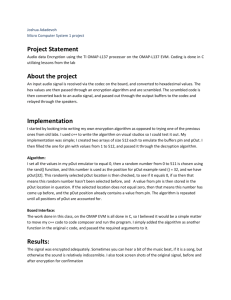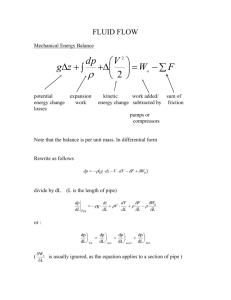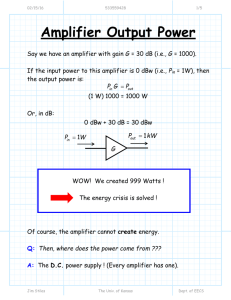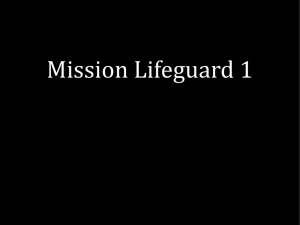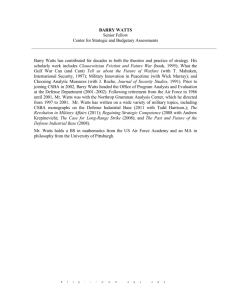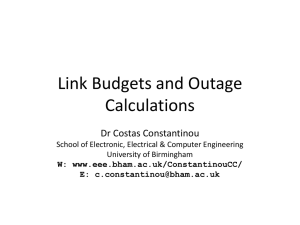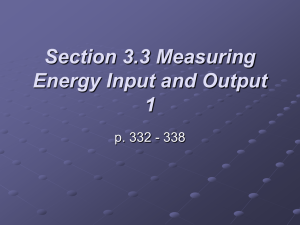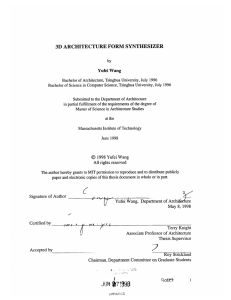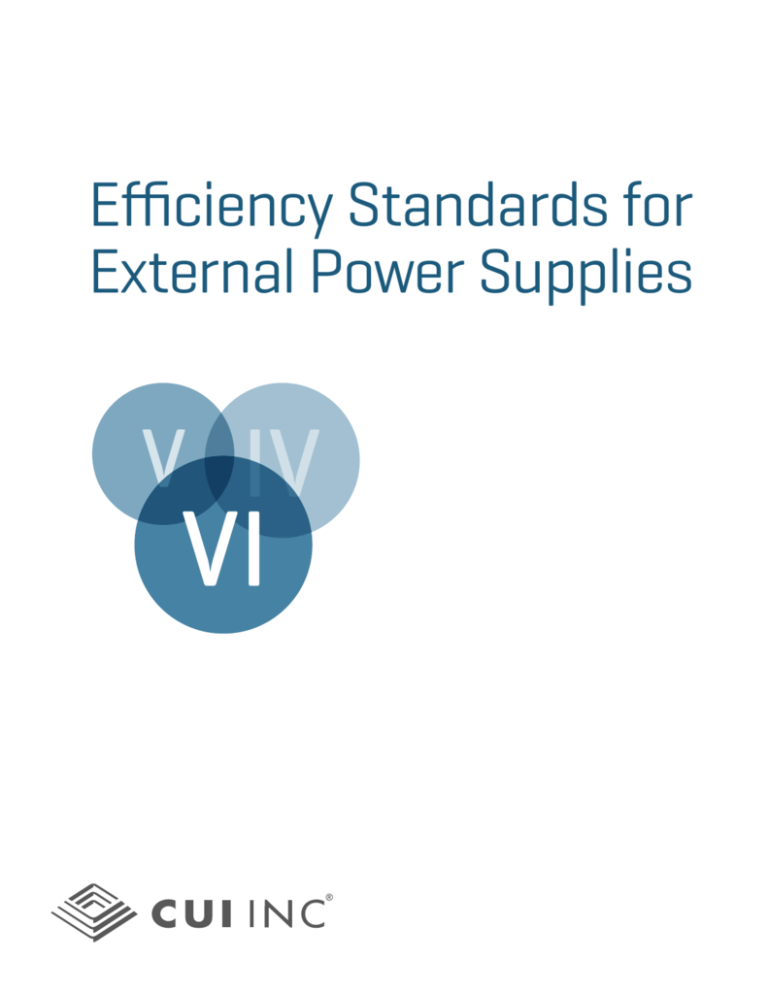
Efficiency Standards for
External Power Supplies
V IV
VI
www.cui.com
Efficiency Standards for External Power Supplies
The global regulatory environment surrounding the legislation of external
power supply efficiency and no-load power draw has rapidly evolved over
the past decade since the California Energy Commission (CEC) implemented
the first mandatory standard in 2004. With the introduction of a new set of
requirements by the United States Department of Energy (DOE) that became
effective in February 2016, the landscape has again changed as regulators try
to further reduce the amount of energy consumed by external power adapters.
Mandating higher average efficiencies in external power supplies has
undoubtedly had a real impact on global power consumption. However, with the
benefit of a reduced draw on the power grid come challenges and uncertainties
for the electronics industry as it tries to keep up with this dynamic regulatory
environment.
Original Equipment Manufacturers (OEMs) who design external power supplies
into their products must continue to monitor the latest regulations to ensure
that they are in compliance in each region where their product is sold. The
goal of this paper is to provide an up-to-date summary of the most current
regulations worldwide.
A BRIEF HISTORY
In the early 90’s, it was estimated that there were more than one billion external power supplies active in
the United States alone. The efficiency of these power supplies, mainly utilizing linear technology, could be
as low as 50% and still draw power when the application was turned off or not even connected to the power
supply (referred to as “no-load” condition). Experts calculated that without efforts to increase efficiencies and
reduce “no-load” power consumption, external power supplies would account for around 30% of total energy
consumption in less than 20 years. As early as 1992, the US Environmental Protection Agency started a voluntary
program to promote energy efficiency and reduce pollution which eventually became the Energy Star program.
However, it was not until 2004 that the first mandatory regulation dictating efficiency and no-load power draw
minimums was put in place. Figure 1 demonstrates just how dynamic the regulatory environment has been over
the past decade. It also traces the path from the CEC’s 2004 regulation up to the new Level VI standards that
became effective in February 2016.
page 2
www.cui.com
Efficiency Standards for External Power Supplies
NONE
Figure 1: The image below traces the path from the CEC’s 2004 regulation up to the new Level VI standards that took effect in February 2016
California Energy
Commission (CEC)
Passes legislation to impliment their Tier 1
standards in July ‘06 (equivalent to Level III)
PRE
China Energy
Conservation Program
2004
2005
LEVEL III
2006
CEC Tier 1
California implements its Tier 1
standards (equivalent to Level III)
page 3
LEVEL IV
LEVEL VI LEVEL V
2014
Enacts ErP Directive 2009/125/EC
with dates to harmonize with CEC
and EISA by April ‘11
Energy Star
2010
2012
These efficiency levels are implemented
equivalent to Level IV
European Union
2010
US Department
of Energy (DOE)
Publishes more stringent Level VI standard
2008
2009
NRCan
Natural Resources Canada implements Tier 1
standards equivalent to Level IV
Enacts the Energy Independence and
Security Act (EISA), harmonized with CEC
Tier II release date and requirements
CEC Tier 2 & EISA 2007
2008
European Union
Implements Phase 1 of their ErP
directive equivalent to Level IV
Implements their Minimum
Efficiency Performance
standard, (equivalent to Level III)
US Congress
2007
2008
Approves Directive 2005/32/EC establishing
a framework for the settingof eco-design
requirements, power supplies not defined
Australia
2006
Energy Star
Allows manufacturers to use the
Energy Star label if their power
supplies meet Level IV standards
2005
2006
Australia
Updates MEPS to include a voluntary High
Efficiency category equivalent to Level IV
Implements a voluntary efficiency
program, never fully adopted
European Union
2005
Energy Star
Releases international efficiency
marking protocol to harmonize all
initiatives around the globe
No mandatory standards were set before 2004
2004
Energy Star
Implements a voluntary efficiency
program with levels referred to as Tier 1
Voluntary
Removes the power supply
category from its listing as they
feel it is part of the end product
EISA, CEC & European Union
2011
CEC implements their Tier 3 Standards and EU
implements its Phase 2 standards in harmony
with Level V Marking Protocol
Level VI Efficiency Standard
2016
Went into effect in the US February 10, 2016
www.cui.com
Efficiency Standards for External Power Supplies
THE CURRENT REGULATORY ENVIRONMENT
As different countries and regions enact stricter requirements and move from voluntary to mandatory programs,
it has become vital that OEMs continually track the most recent developments to ensure compliance and avoid
costly delays or fines. While many countries are establishing voluntary programs harmonized to the international
efficiency marking protocol system first established by Energy Star, the following countries and regions now have
regulations in place mandating that all external power supplies shipped across their borders meet the specified
efficiency level:
CANADA
EUROPEAN UNION
Power supply manufacturers indicate compliance by
placing a Roman Numeral (I, II, III, IV, V or VI) on the
power supply label as specified by the International
Efficiency Marking Protocol for External Power
Supplies Version 3.0, updated in September 2013.
This latest version of the Protocol provides additional
flexibility on where the marking may be placed.
While the United States is currently the only
government to enforce compliance to the Level VI
standard, most external power supply manufactures
have adjusted their product portfolios to meet these
requirements. Today, Level VI will meet or exceed the
requirements of any governing body around the world.
The adjustments are a direct response to the needs
of OEM’s to have a universal power supply platform for
their products that ship globally.
page 4
UNITED STATES
MODELO
Entrada
:
www.cui.com
Efficiency Standards for External Power Supplies
PERFORMANCE THRESHOLDS
Figure 2 summarizes past performance thresholds as they were established over time.
The internationally approved test method for determining efficiency has been published by the IEC as AS/NZS 4665
Part 1 and Part 2. The approach taken to establish an efficiency level is to measure the input and output power at 4
defined points: 25%, 50%, 75% and 100% of rated power output. Data for all 4 points are separately reported as well
as an arithmetic average active efficiency across all 4 points.
LEVEL
NO-LOAD POWER REQUIREMENT
AVERAGE EFFICIENCY REQUIREMENT
I
used if you do not meet any of the criteria
II
no criteria was ever established
no criteria was ever established
III
≤10 Watts: ≤0.5W of No Load Power
≤1Watt: ≥ Power x 0.49
10~250 Watts: ≤0.75W No Load Power
1~49 Watts: ≥[0.09 x Ln(Power)] + 0.49
49~250 Watts: ≥84%
IV
0~250 Watts: ≤0.5W No Load Power
≤1Watt: ≥ Power x 0.50
1~51 Watts: ≥[0.09 x Ln(Power)] + 0.5
51~250 Watts: ≥85%
V
Standard Voltage Ac-Dc Models (>6Vout)
0~49 Watts: ≤0.3W of No Load Power
≤1 Watt: 0.48 x Power +0.140
50~250 Watts: ≤0.5W of No Load Power
1~49 Watts: [0.0626 x Ln(Power)] + 0.622
50~250 Watts: ≥87%
Low Voltage Ac-Dc Models (<6Vout)
0~49 Watts: ≤0.3W of No Load Power
≤1 Watt: 0.497 x Power + 0.067
50~250 Watts: ≤0.5W of No Load Power
1~49 Watts: [0.0750 x Ln(Power)] + 0.561
50~250 Watts: ≥86%
Figure 2: The table above summarizes past performance thresholds as they were established over time. The term “power” means the
power designated on the label of the power supply.
page 5
www.cui.com
Efficiency Standards for External Power Supplies
LEVEL VI PERFORMANCE
THRESHOLDS
SINGLE-VOLTAGE EXTERNAL AC-AC POWER SUPPLY, LOW-VOLTAGE
Nameplate
Output Power
(Pout )
The Level VI standard tightens performance
thresholds for adapters in active mode and no-load
conditions. Along with tightened regulations for
adapters governed under previous regulations, the
new standard expands the range of products that
fall under the standard. Regulated products will now
include:
The latest performance thresholds are
summarized in the tables below:
0.5 × Pout + 0.16
1 W < Pout ≤ 49 W
0.071 × ln(Pout) - 0.0014 × Pout + 0.67
0.100
49 W < Pout ≤ 250 W
0.880
0.210
Pout > 250 W
0.875
0.500
Minimum Average
Efficiency in Active Mode
(expressed as a decimal)
Maximum Power
in No-Load Mode
(W)
Pout ≤ 1 W
0.517 × Pout + 0.087
0.100
1 W < Pout ≤ 49 W
0.0834 × ln(Pout) - 0.0014 × Pout + 0.609
0.100
49 W < Pout ≤ 250 W
0.870
0.210
Pout > 250 W
0.875
0.500
SINGLE-VOLTAGE EXTERNAL AC-AC POWER SUPPLY3, BASIC-VOLTAGE
Nameplate
Output Power
(Pout )
Minimum Average
Efficiency in Active Mode
(expressed as a decimal)
Maximum Power
in No-Load Mode
(W)
Pout ≤ 1 W
0.5 × Pout + 0.16
1 W < Pout ≤ 49 W
0.071 × ln(Pout) - 0.0014 × Pout + 0.67
0.210
49 W < Pout ≤ 250 W
0.880
0.210
Pout > 250 W
0.875
0.500
page 6
0.210
0.210
49 W < Pout ≤ 250 W
0.870
0.210
Pout > 250 W
0.875
0.500
Minimum Average
Efficiency in Active Mode
(expressed as a decimal)
Maximum Power
in No-Load Mode
(W)
Pout ≤ 1 W
0.497 × Pout + 0.067
0.300
1 W < Pout ≤ 49 W
0.075 × ln(Pout) + 0.561
0.300
Pout > 49 W
0.860
0.300
2
Low-Voltage External Power Supply
An external power supply with a nameplate output voltage less than
6 volts and nameplate output current greater than or equal to 550
milliamps. Basic-voltage external power supply means an external power
supply that is not a low-voltage power supply.
3
Single-Voltage External Ac-Ac Power Supply
An external power supply that is designed to convert line voltage ac into
lower-voltage ac output and is able to convert to only one ac output
voltage at a time.
4
Multiple-Voltage External Power Supply
An external power supply that is designed to convert line voltage ac input
into more than one simultaneous lower-voltage output.
SINGLE-VOLTAGE EXTERNAL AC-DC POWER SUPPLY, LOW-VOLTAGE 2
Nameplate
Output Power
(Pout )
0.210
0.0834 × ln(Pout) - 0.0014 × Pout + 0.609
Single-Voltage External Ac-Dc Power Supply
An external power supply that is designed to convert line voltage ac into
lower-voltage dc output and is able to convert to only one dc output
voltage at a time.
Maximum Power
in No-Load Mode
(W)
0.100
0.517 × Pout + 0.087
1 W < Pout ≤ 49 W
1
SINGLE-VOLTAGE EXTERNAL AC-DC POWER SUPPLY 1, BASIC-VOLTAGE
Pout ≤ 1 W
Pout ≤ 1 W
Nameplate
Output Power
(Pout )
Δ Products with power levels >250 watts
Minimum Average
Efficiency in Active Mode
(expressed as a decimal)
Maximum Power
in No-Load Mode
(W)
MULTIPLE-VOLTAGE EXTERNAL POWER SUPPLY4
Δ Multiple-voltage external power supplies
Nameplate
Output Power
(Pout )
Minimum Average
Efficiency in Active Mode
(expressed as a decimal)
www.cui.com
Efficiency Standards for External Power Supplies
DIRECT VS INDIRECT
OPERATION EPSs
The Level VI standard also defines power supplies as
direct operation and indirect operation products. A
direct operation product is an external power supply
(EPS) that functions in its end product without the
assistance of a battery. An indirect operation EPS
is not a battery charger but cannot operate the end
product without the assistance of a battery. The new
standard only applies to direct operation external
power supplies. Indirect operation models will still be
governed by the limits as defined by EISA2007. Figure
3 illustrates the instructions provided by the DOE to
help distinguish between direct and indirect operation
power supplies:
1
If the external power supply (EPS) can be
connected to an end-use consumer
product and that consumer product can be
operated using battery power, the method
for determining whether that EPS is
incapable of operating that consumer
product directly is as follows:
step i
If the end-use product has a removable battery, remove
it for the remainder of the test and proceed to step (v).
If not, proceed to step (ii).
step ii
Charge the battery in the application via the EPS such
that the application can operate as intended before
taking any additional steps.
step iii
LEVEL VI EXEMPTIONS
Disconnect the EPS from the application. From an off
mode state, turn on the application and record the time
necessary for it to become operational to the nearest
five second increment (5 sec, 10 sec, etc.).
The Level VI mandate defines exemptions for EPS
products. The direct operation EPS standards do not
apply if:
step iv
Δ It is a device that requires Federal Food and Drug
Administration listing and approval as a medical
device in accordance with section 360c of title 21;
Operate the application using power only from the
battery until the application stops functioning due to
the battery discharging.
step v
OR
Connect the EPS first to mains and then to the application.
Immediately attempt to operate the application. If the
battery was removed for testing and the end-use product
operates as intended, the EPS is not an indirect operation
EPS and paragraph 2 of this definition does not apply.
Δ A direct operation, ac-dc external power supply with
nameplate output voltage less than 3 volts and
nameplate output current greater than or equal
to 1,000 milliamps that charges the battery of a
product that is fully or primarily motor operated.
If the battery could not be removed for testing, record the
time for the application to become operational to the
nearest five second increment (5 seconds, 10 seconds, etc.).
2
If the time recorded in paragraph (1)(v) is
greater than the summation of the time
recorded in paragraph (1)(iii) of this
definition and five seconds, the EPS cannot
operate the application directly and is an
indirect operation EPS.
Figure 3: The above instructions have been provided by the
DOE to help distinguish between direct and indirect operation
power supplies.
page 7
www.cui.com
Efficiency Standards for External Power Supplies
LOOKING FORWARD
Level VI compliance in the United States became
effective on February 10, 2016, two years after
the rule’s publication in the Federal Register. It is
important to note that compliance is regulated
based on the date of manufacture within the United
States or date of import into the United States, so
legacy products can still be shipped as long as the
US manufacture date or US import date is prior
to February 10, 2016. Labeling requirements are
covered by the same International Efficiency Marking
Protocol for External Power Supplies Version 3.0 as
for previous standards.
Globally, it is expected that other nations will
soon follow suit with this standard. In the EU,
the mandatory European Ecodesign Directive for
external power supplies is currently going through
revision discussions and it is expected to harmonize
with most, if not all, of the US standards. It should
be expected that countries with existing efficiency
regulations in-line with the US, including Canada
and Australia, will move to harmonize with the new
standard as well.
SUMMARY
The EPA estimates that external power supply
efficiency regulations implemented over the past
decade have reduced energy consumption by 32
billion kilowatts, saving $2.5 billion annually and
reducing CO2 emissions by more than 24 million tons
per year. Moving beyond the mandated government
regulations, many OEMs are now starting to demand
“greener” power supplies as a way to differentiate
their end-products, driving efficiencies continually
higher and even pushing the implementation of
control technologies that in some cases eliminates
no-load power consumption altogether. In late
2014, CUI Inc began introducing Level VI compliant
adapters to keep their customers one step ahea d
of the coming legislation. Moving forward, CUI will
continue to look for ways to implement the latest
energy saving technologies into their external power
supplies in order to address market demands and
comply with current and future regulations.
VI
View all of CUI’s Level VI
compliant power supplies.
Learn More
www.cui.com
20050 SW 112th Ave.
Tualatin, Oregon 97062
page 8
© 2016 CUI Inc. All rights reserved. 01/2016

